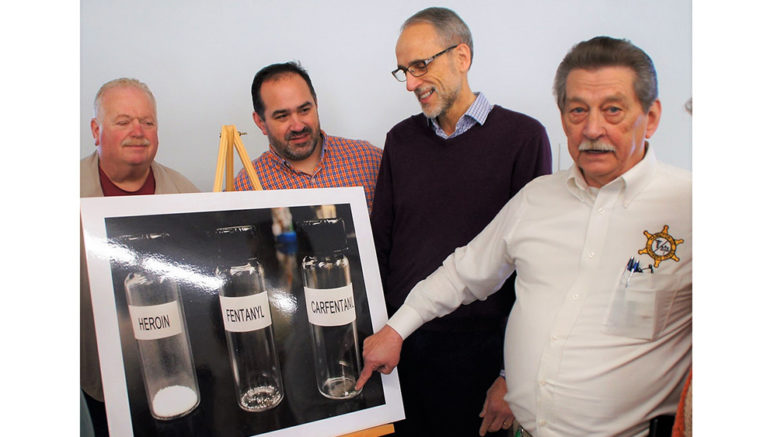This past Saturday’s meeting of the Cicero Kiwanis Club was the most recent stop for Hamilton County Coroner John Chalfin, who has been meeting with lawmakers, community leaders, local groups and churches as he works to bring attention to a growing problem in our community – opioid addiction. This deadly epidemic is sweeping across the country, including Hamilton County. Yes, even Hamilton County, one of the “healthiest” counties in the country, is not immune to this growing problem.
Chalfin, who has been in the role of Hamilton County Coroner since 2015, is clearly pained by the impact of what his office sees and the impact on families. He shared with the group that there are some undeniable facts that can’t be ignored related to this issue:
- The problem is more widespread than people realize.
- It is a complex, multi-faceted issue.
- Drug addiction typically begins with prescription drug use.
- The U.S. comprises 5 percent of the world’s total population and consumes 85 percent of the opiates produced.
- Since the late 1990s the use of painkillers in this country has tripled.
- Drug overdoses kill more people than automobile accidents.
- Drug dealers in the county are purchasing larger quantities and using direct lines from Mexico.
- Drug overdose deaths in Hamilton County have risen over the past four years, nearly doubling from 2016 to 2017.
- The majority of those who have died due to overdose in Hamilton County are between the ages of 25 and 29.
Chalfin’s office investigated 36 drug overdose deaths from the county last year. Chalfin said he believes this number is actually higher due to several factors: 1.) How the deaths are reported by doctors; and 2.) When a Hamilton County resident is transported to a hospital just outside the county (like Community or St. Vincent’s) and dies from an overdose, it is reported as a death in Marion County. To help obtain more accurate numbers Chalfin and his deputy coroners are currently working with state lawmakers to create an anonymous form for doctors to use to help counties better track overdose deaths.
Chalfin believes the roots of addiction can easily begin with prescription drugs and continue due to their demand, accessibility and overuse. Coupled with cheap street drugs like heroin, the fact that 40 percent of people are wired with brain chemistry prone to addiction – in a culture wanting to be free of any type of pain – there is undoubtedly a pretty big problem.
In terms of being pain-free, pain plays an important role in our health,” noted Chalfin. “Pain was adopted as the fifth vital sign by the VA and JCAHO back in 1998-99. Knowing what we know about addiction today, we need to think twice about masking all pain or utilize less addictive options for temporary relief.
Chalfin was unwavering in his message, “We have a problem.” By “we” he means this is a problem that affects everyone in our community not just those addicted. “One life lost in this manner is one too many,” noted Chalfin. “Especially if it’s your loved one.”
While he admits “there is no silver bullet to fix the opioid problem,” acknowledging there is a problem, removing the stigma, educating people on the signs of drug use, being more diligent in securing prescription drugs in the home and proper disposal, local treatment and support services is a good place to start.

